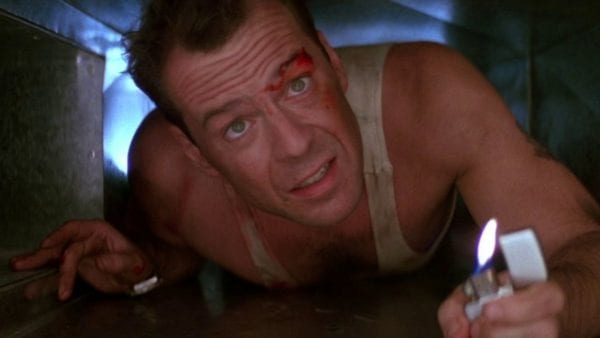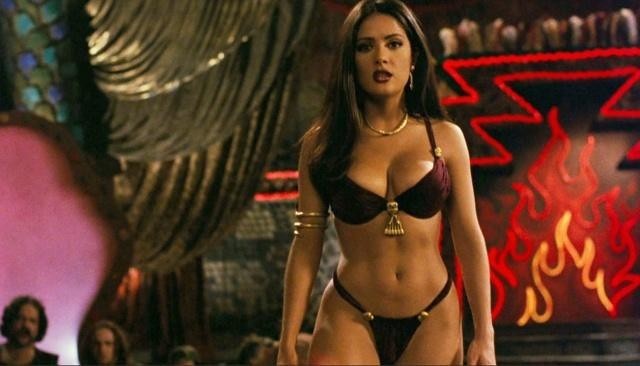Anghus Houvouras on James Cameron’s Avatar and its total lack of cultural impact…
We’re living in an age of entertainment extremism, where passionate fans go to ludicrous lengths to engage in hyperbolic talking points about their favorite film or franchise. It can be exhausting, wading through social media and hearing people make bold declarations not based on anything remotely resembling the truth.
Today, we’re going to tackle a topic discussed online at great length over the last month, ever since James Cameron’s Avatar was re-released in theaters and once again became the most successful motion picture ever. A familiar topic and subsequent narrative that has emerged was discussed at great length when the film was first released over a decade ago: Did Avatar have a significant cultural impact?
Rather than share feelings, let’s take a moment to establish some facts. What determines a cultural impact? To answer this question, we’ll use the movie that redefined pop-culture impact in the modern era and the most influential movie ever released, Star Wars, as well as some other popular films that had a lasting impact on our collective culture.
When released back in May of 1977, George Lucas’love letter to sci-fi adventure became a massive hit and as of this writing, is still the most culturally impactful movie ever released. Using Star Wars as a template, let’s examine the impact of Avatar in terms of pop culture impact.
1. Massive Box Office Success
Clearly, Avatar has easily cleared the first benchmark; it was an overwhelming hit at the box office making over $2.7 billion. The movie was a staple in theaters for months after release, something that was quite common when Star Wars was released in 1977. At the time Avatar hit theaters, most blockbusters were in and out of multiplexes within 90 days.
Like Cameron’s previous film, Titanic, Avatar had staying power. It was a solid earner week after week. People were making return visits to the theater to experience the film again and again. Like Star Wars, Avatar was a water cooler movie that generated a lot of excitement from fans.
Now, let’s talk about a few things. First off, not every movie that has a cultural impact has to be a huge box-office success. It doesn’t hurt, but there are movies with a significant cultural impact that barely made a peep at the box office (Office Space). Concurrently, just because a movie is a massive hit at the theater doesn’t mean it has a significant cultural impact. This is a key point of framing the definition of ‘cultural impact’.
To me, cultural impact is measured by what happens outside of the movie theater. That takes us to our second point on the ‘pop culture seismic scale’.
2. Merch
George Lucas made a number of very savvy moves when dealing with 20th Century Fox. The most significant being keeping the merchandising rights to Star Wars. To quote Krusty the Klown, “That’s the sweetest plum”. Star Wars merchandise was all the rage after the film was released. T-Shirts, lunchboxes, posters, trading cards, pins, flamethrowers… Lucas was slapping ‘May The Force Be With You” on anything and everything generating billions of dollars globally even after Return of the Jedi came out and the prospect of no more Star Wars movies felt like a real possibility.
In comparison, Avatar didn’t fare nearly as well when it came to merchandising. There were action figures that didn’t sell incredibly well, a video game that barely warranted mention, t-shirts and backpacks… but none of it was flying off the shelves. Within a year of release, Avatar merchandise had already vanished from shelves or found itself in the clearance section of most major retailers.
With Avatar: The Way of Water launching this December and a new video game from Ubisoft coming around the same time, this could change. But as of writing this article, Avatar merch isn’t really a thing. You don’t see kids playing with Avatar action figures or wearing Avatar backpacks to school. How many kids do you see dressing up as Na’vi for Halloween?
The movie did not make an impact outside of the theatrical experience.
3. Memes & Memorability
“May the force be with you”
“Do or do not, there is no try.”
“Why, you stuck-up half-witted scruffy-looking nerf herder.”
“These aren’t the droids you’re looking for.”
“I got a bad feeling about this”
There are five random quotes from the original Star Wars movies. Most of them were typed from memory. Star Wars is a treasure trove of quotable lines as well as memorable and meme-able moments. Even without the added benefit of the Prequel Trilogy, which might be the most memed movies of the new millennium.
Star Wars has so many infinitely quoted moments. So many lines that have become catchphrases in pop culture and are used in countless TV shows and movies. Kevin Smith made an entire multi-decade career in show business making references to the original trilogy. Star Wars memes and quotes are woven into Western culture and a significant percentage of the thread count when it comes to our collective pop culture tapestry.
Is Avatar something you see referenced often outside the initial release of the movie? Are there famous quotes from Avatar that are constantly referenced online? Any Avatar memes that pop up in your social media feed every other day? Quotes form the movie that are used frequently? The answer is ‘no’. Avatar’s most popular meme isn’t even from the movie. It’s an SNL sketch featuring Ryan Gosling becoming obsessed over the Papyrus font used on the Avatar poster.
Once again, as a cultural entity, Avatar failed to make an impact outside the theater.
4. Imitation
The sincerest form of flattery is something that many impactful movies are credited with and certainly help make the case for cultural impact. Take a film like Die Hard, for example. There was an entire cottage industry of Die Hard clones that went into production after the Bruce Willis action classic became a big hit. Subsequent movies that tried to fill a similar thematic space were described as “Die Hard on a (blank)”. Passenger 57, Air Force One and Executive Decision were “Die Hard on a Plane”. Under Siege was “Die Hard on a Boat”. Speed was “The bus that couldn’t slow down” “Die Hard on a Bus”.
While Die Hard might not have spawned a multi-billion dollar merchandise line, it did inspire a slew of imitators and is still a staple of meme culture. In a few weeks’ time, people online will continue the holiday tradition of lazily asking “Is Die Hard a Christmas movie?” even though everyone stopped caring somewhere around 2015.
Star Wars created many new paradigms, but there weren’t a lot of imitators. In spite of the film’s ridiculous level of success, most studios didn’t try and copy the formula that led to Star Wars‘ massive success. Sure, there were a handful of efforts like The Last Starfighter or Battlestar Galactica, but due to technological breakthroughs and advancements that George Lucas helped pioneer, the market for imitators was extremely limited.
Avatar, on the other hand, didn’t really generate a slew of imitators. At best, it influenced studios to dump money into trying to make 3D financially viable and help sell the spectacle of movies that could barely entertain with two dimensions, and adding a third wasn’t going to help (Gulliver’s Travels, I’m looking at you). Avatar wasn’t significantly influential creatively nor did it inspire a slew of imitators looking to capitalize on Avatar mania.
5. Lore and/or An Expanded Universe
One of the things about massive cultural phenomenons; they tend to inspire audiences who want to learn more about the fictional world portrayed in the film. Most successful blockbuster franchises cross into other mediums spawning books and graphic novels that propel the mythos forwards in the gaps between new cinematic installments.
In the years since Star Wars entered the lexicon, there have been hundreds of novelizations, comics and video games that have built upon the foundation of the original films and created an interconnected universes with a deep and satisfying lore.
There have been Avatar novels and comics which I’m sure have attracted some readers but after 12 years the world of Pandora hasn’t expanded much beyond what we saw in the original movie. There’s a theme park attraction shoehorned into Disney’s Animal Kingdom theme park which has never generated much buzz. While Cameron and company are talking about expanding the world of Avatar, the ‘World of Pandora’ outside of the movie hasn’t been significantly explored, nor has there been any fan demand for them to do so.
Avatar, while a hugely successful box office experience, never managed a sizable impact on pop culture. It’s a hugely successful movie that has, in the 13 years since release, has never transcended the movie theater and evolved into something culturally relevant. It’s impact is practically nonexistent. It isn’t even the most impactful artistic endeavor with the name Avatar. That designation would go to Avatar: The Last Airbender.
So while passionate fans of Avatar might claim otherwise, the most successful movie of all time had no real cultural impact. Barely making a blip on the pop-culture seismic scale.
Let’s check back in a year after The Way of Water has landed and we’ll see if there have been any significant changes to the pop-culture landscape…
Anghus Houvouras













